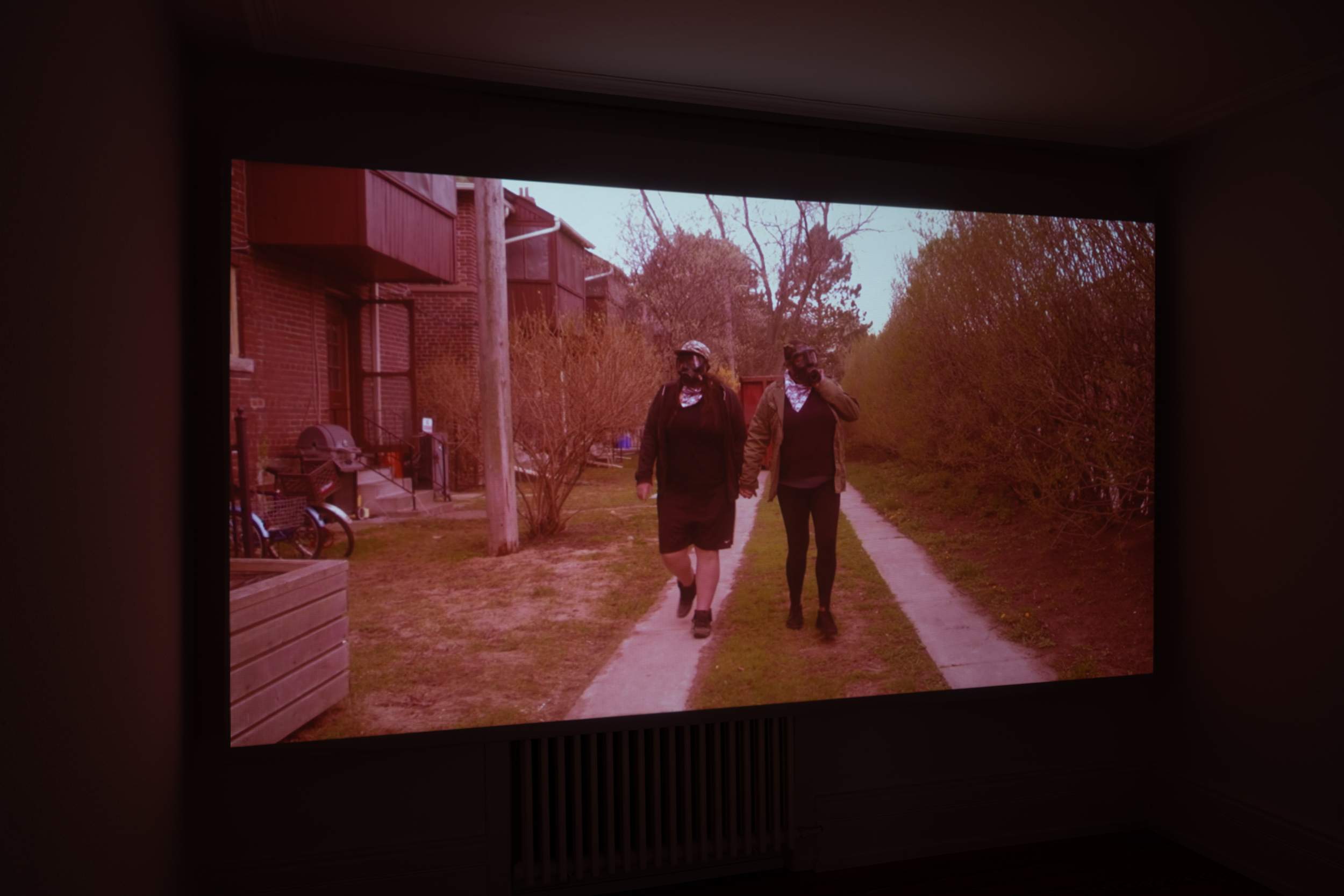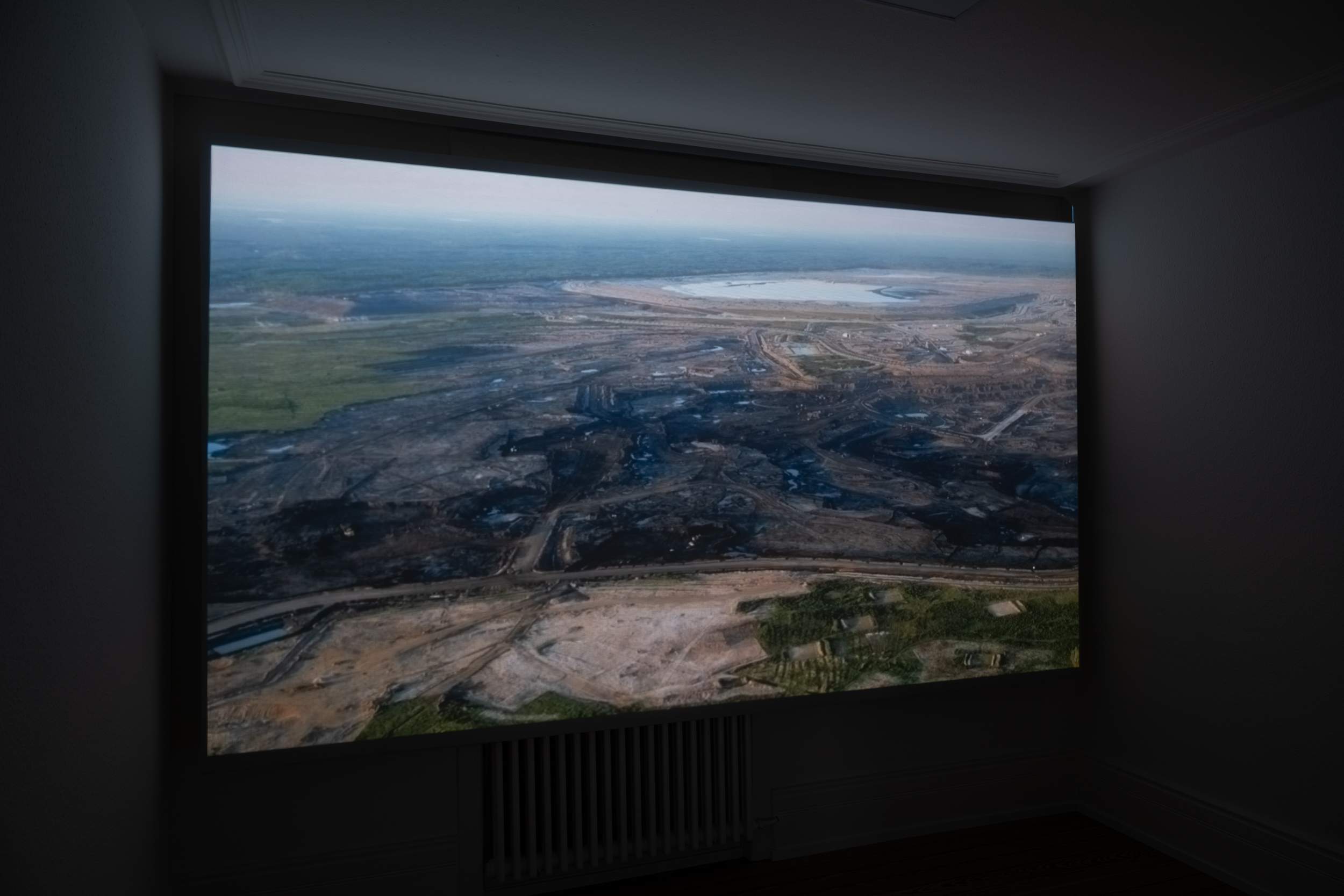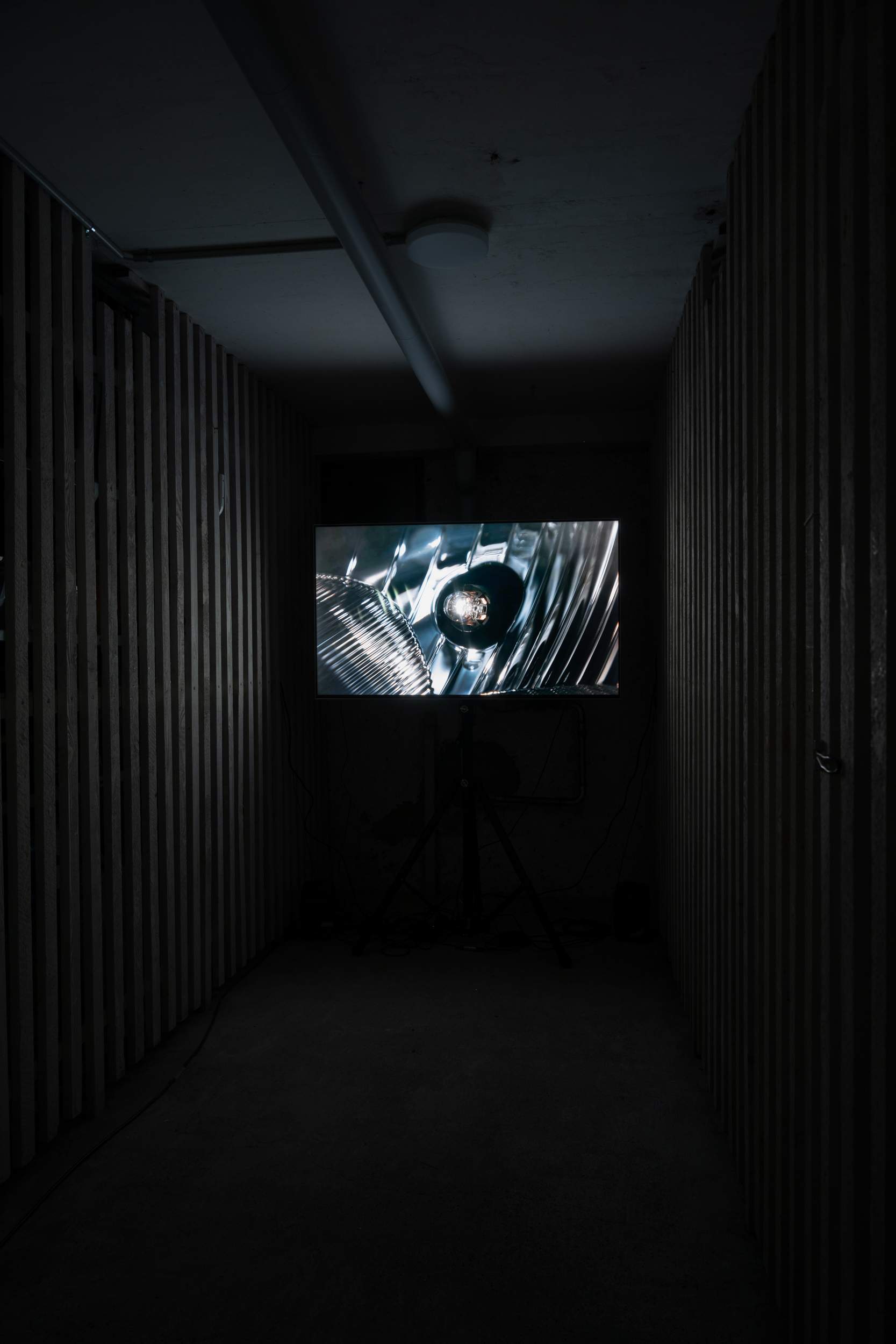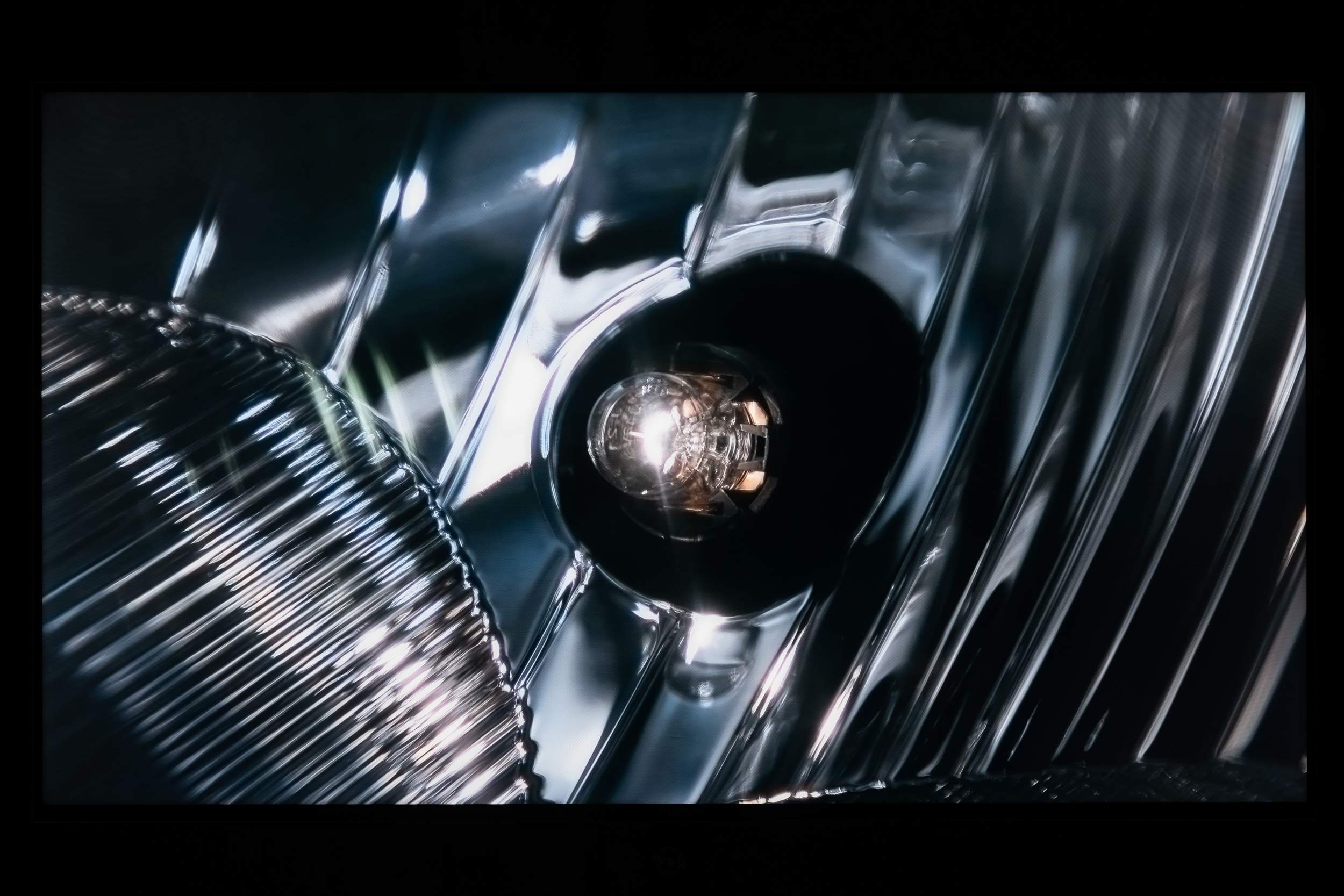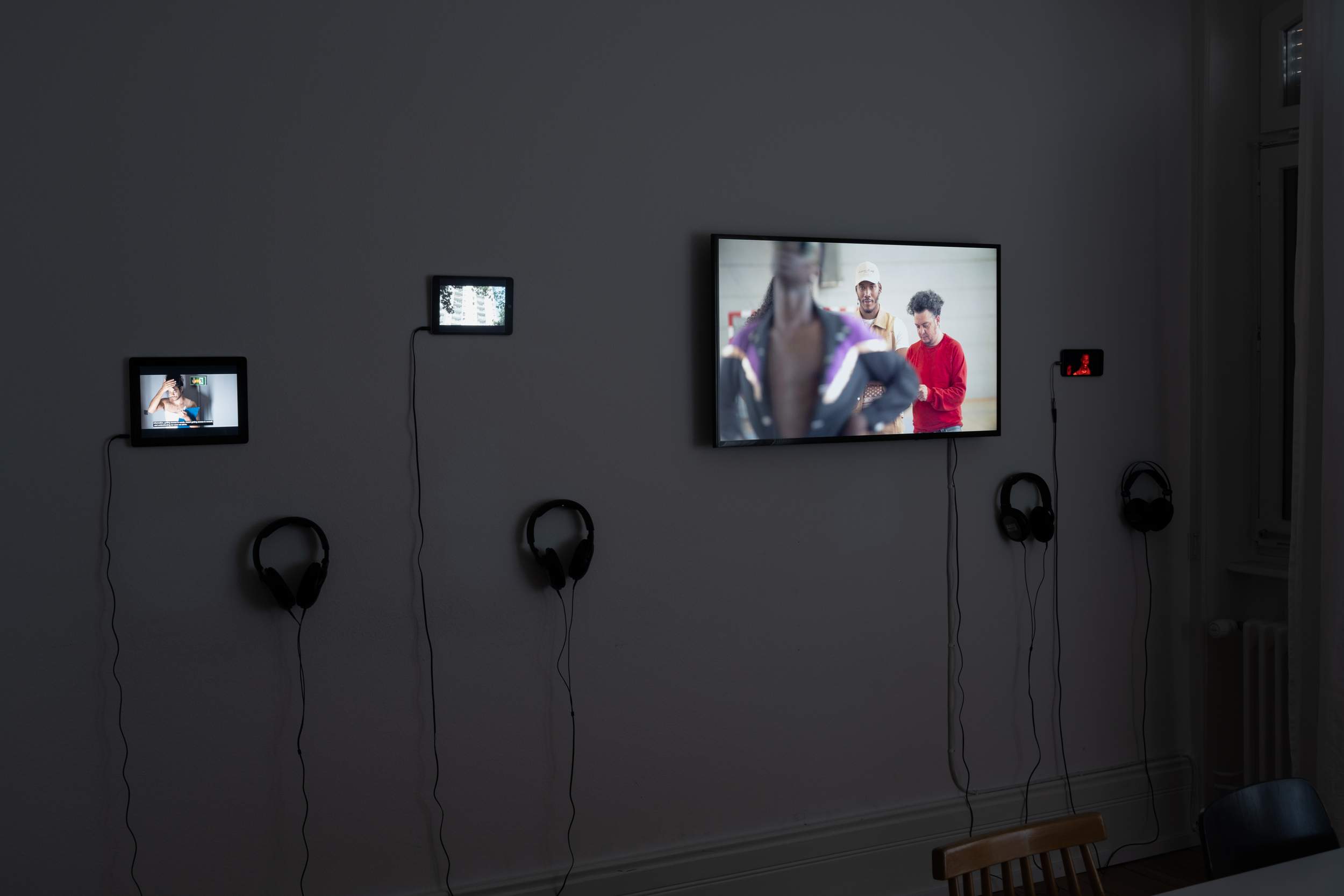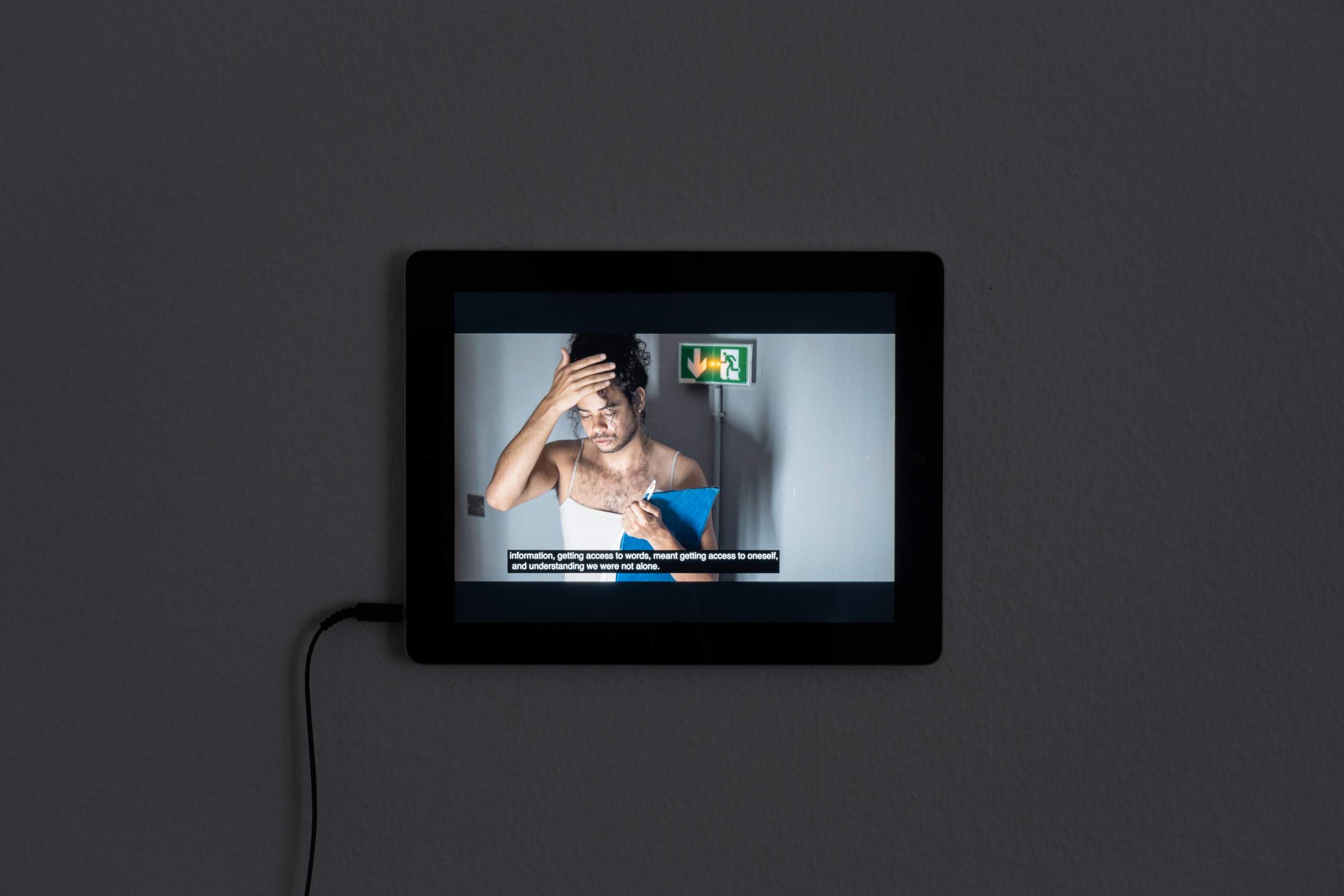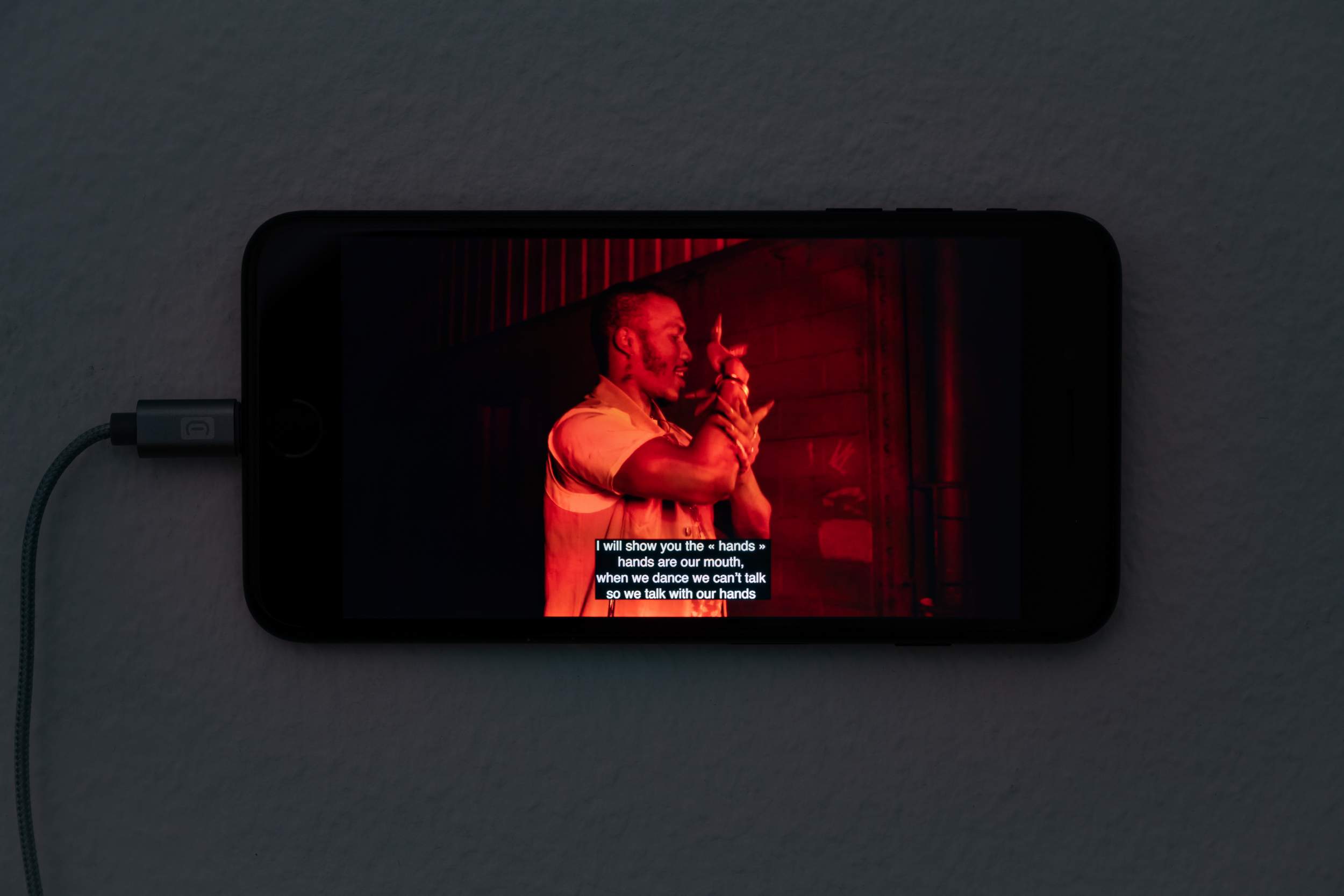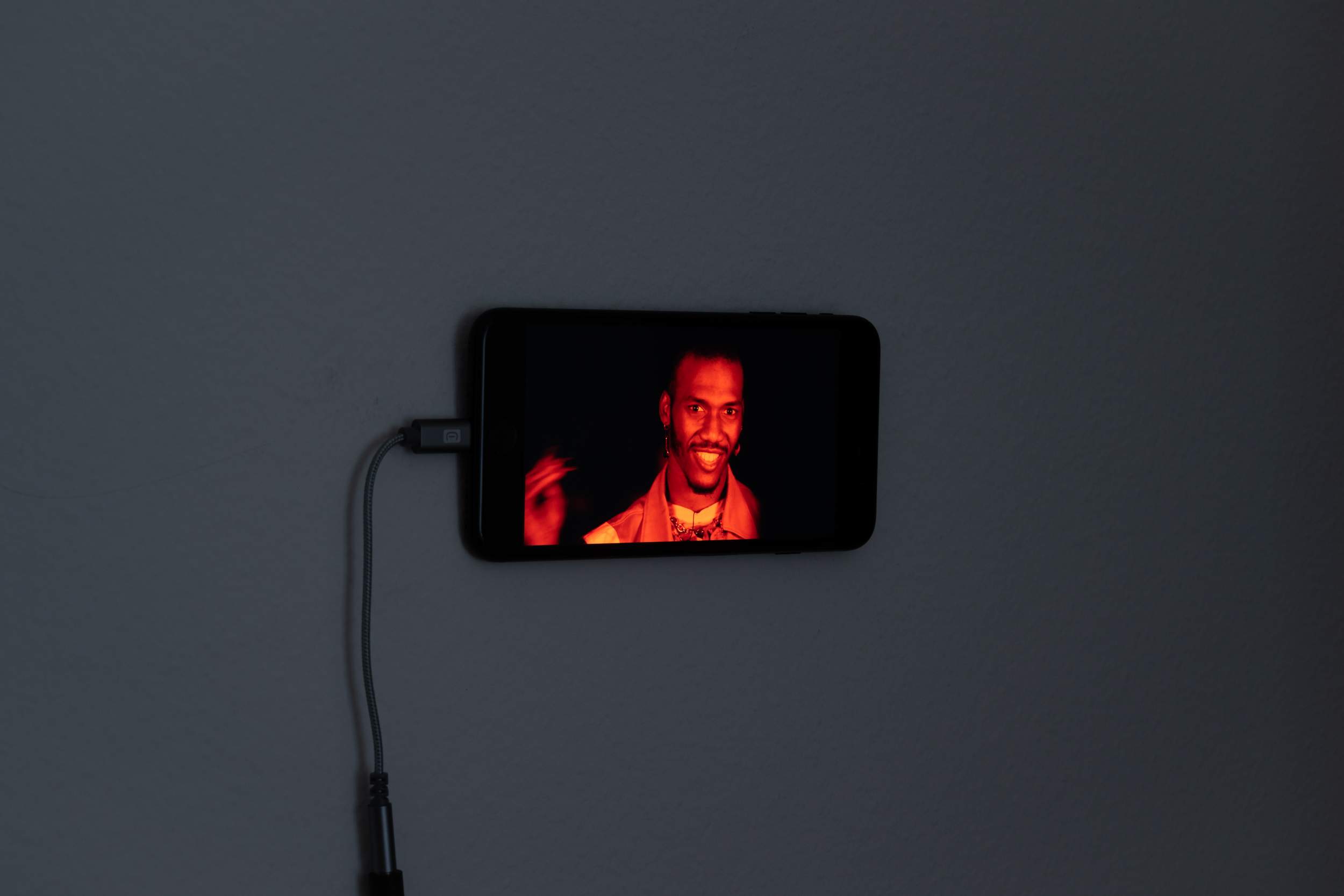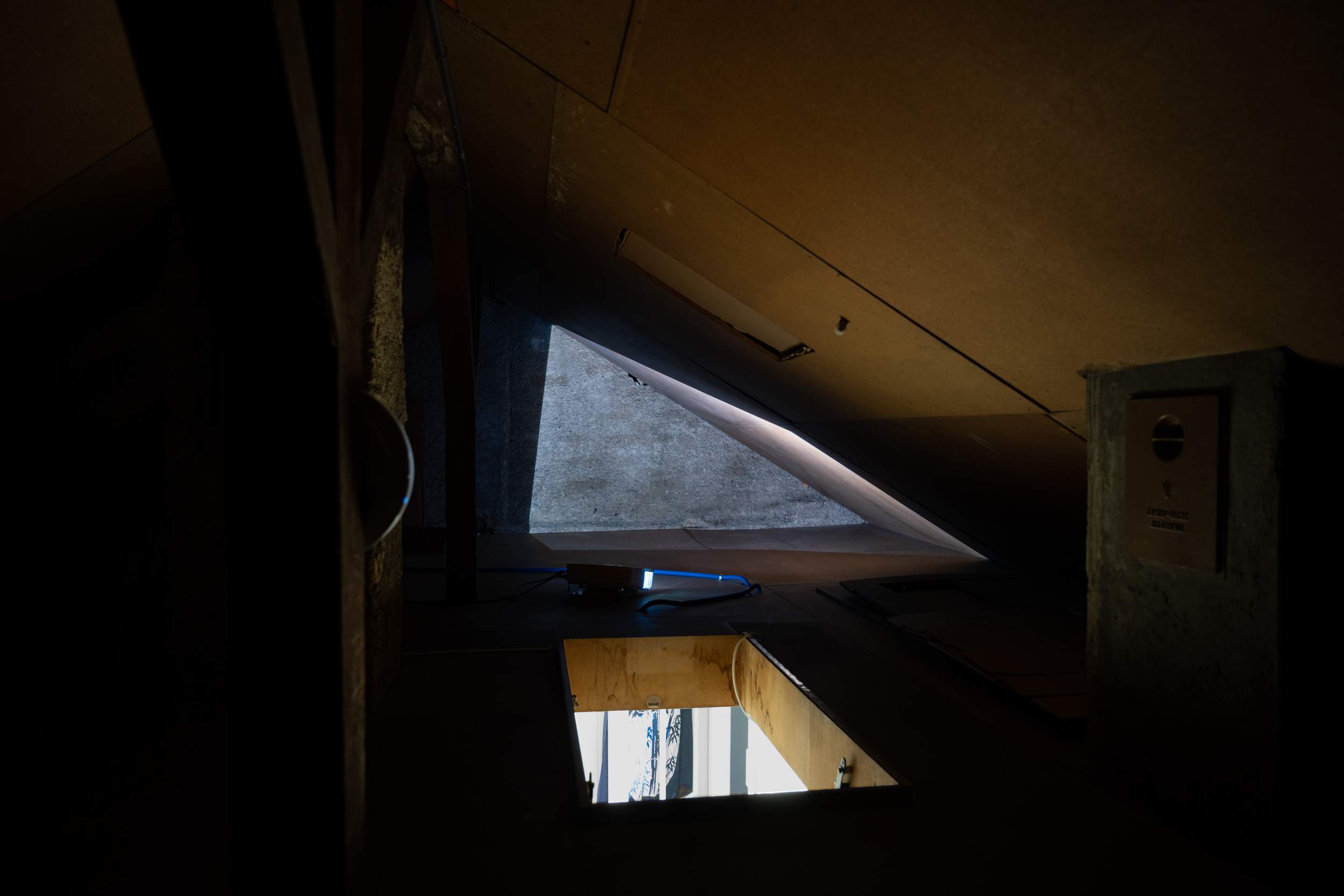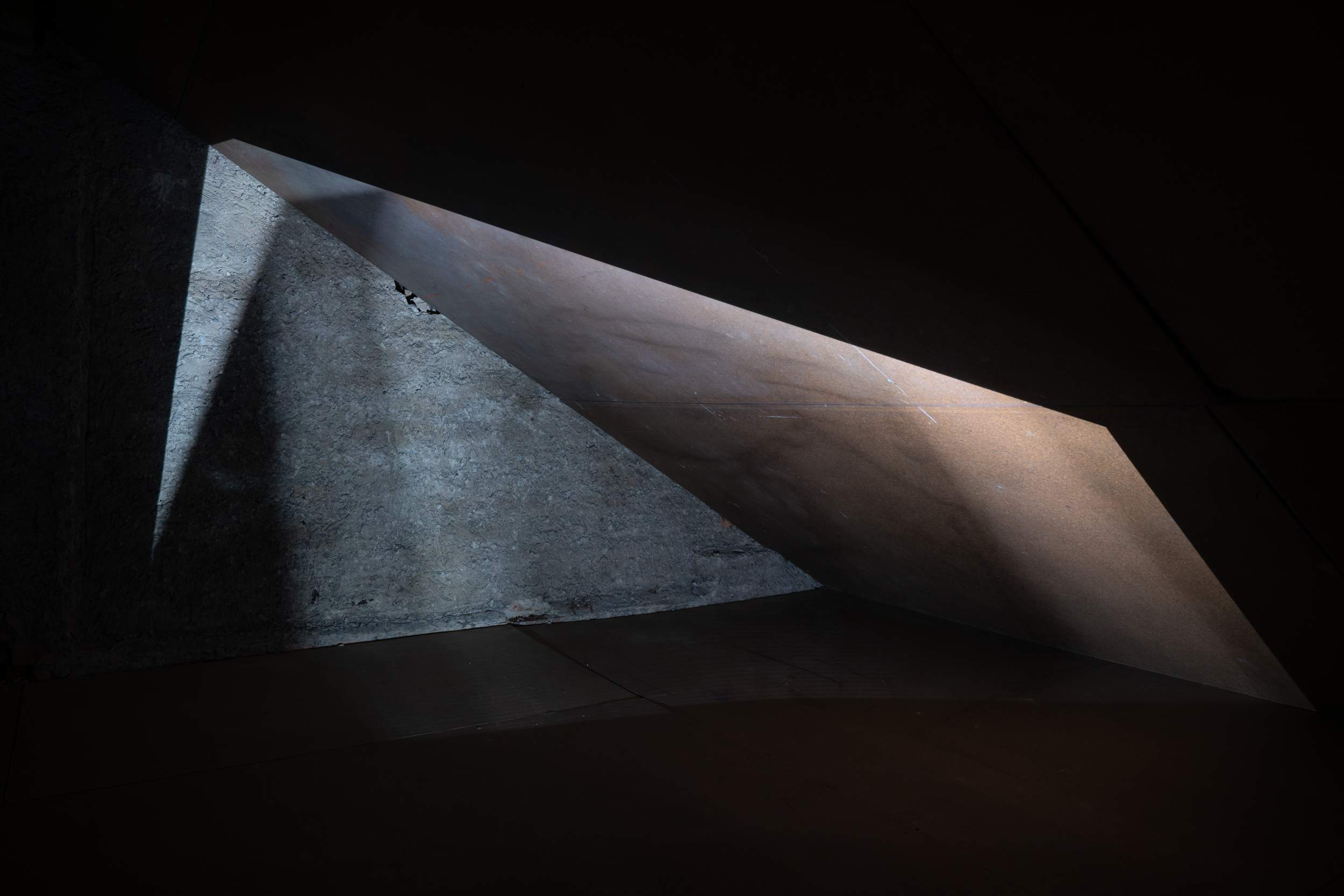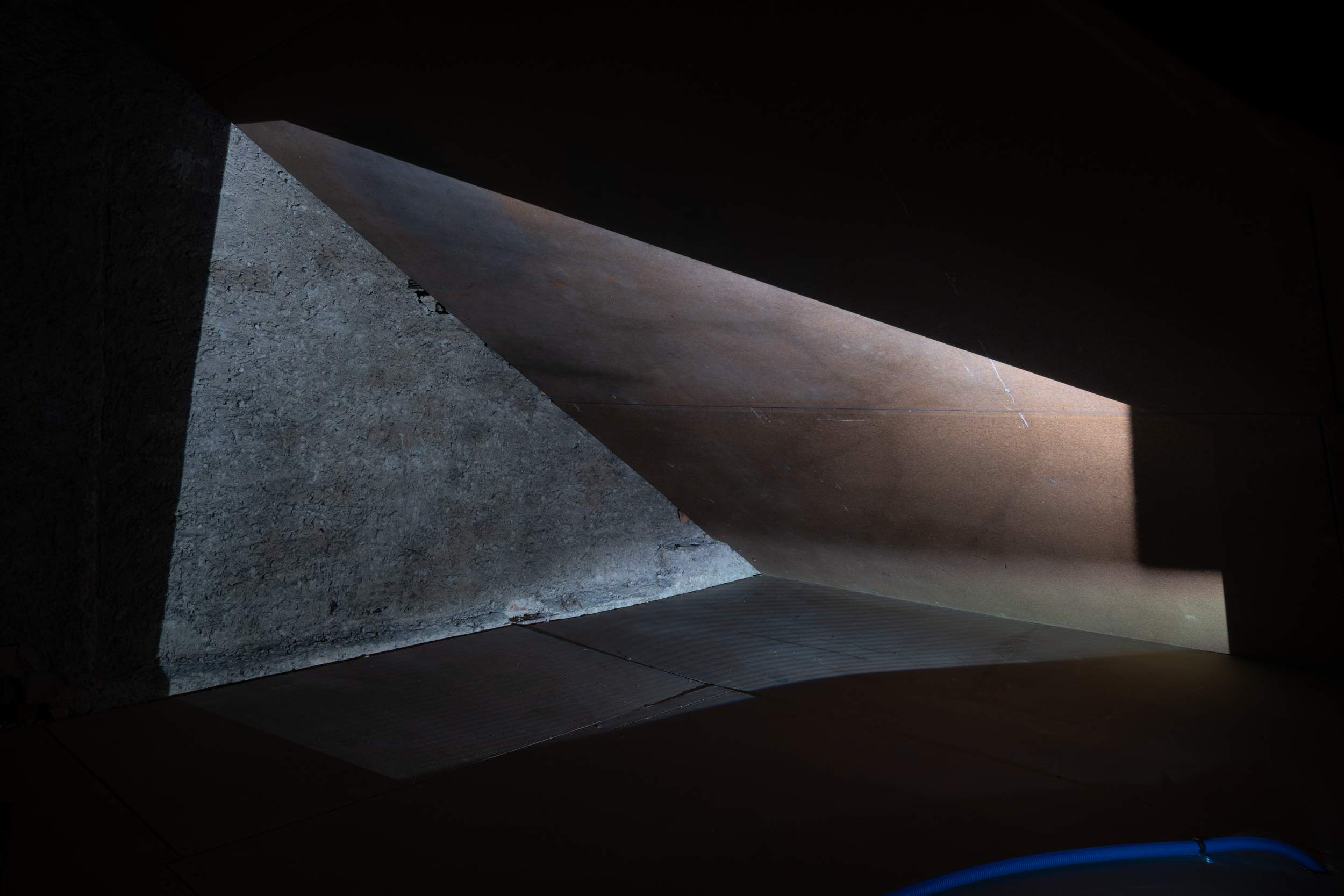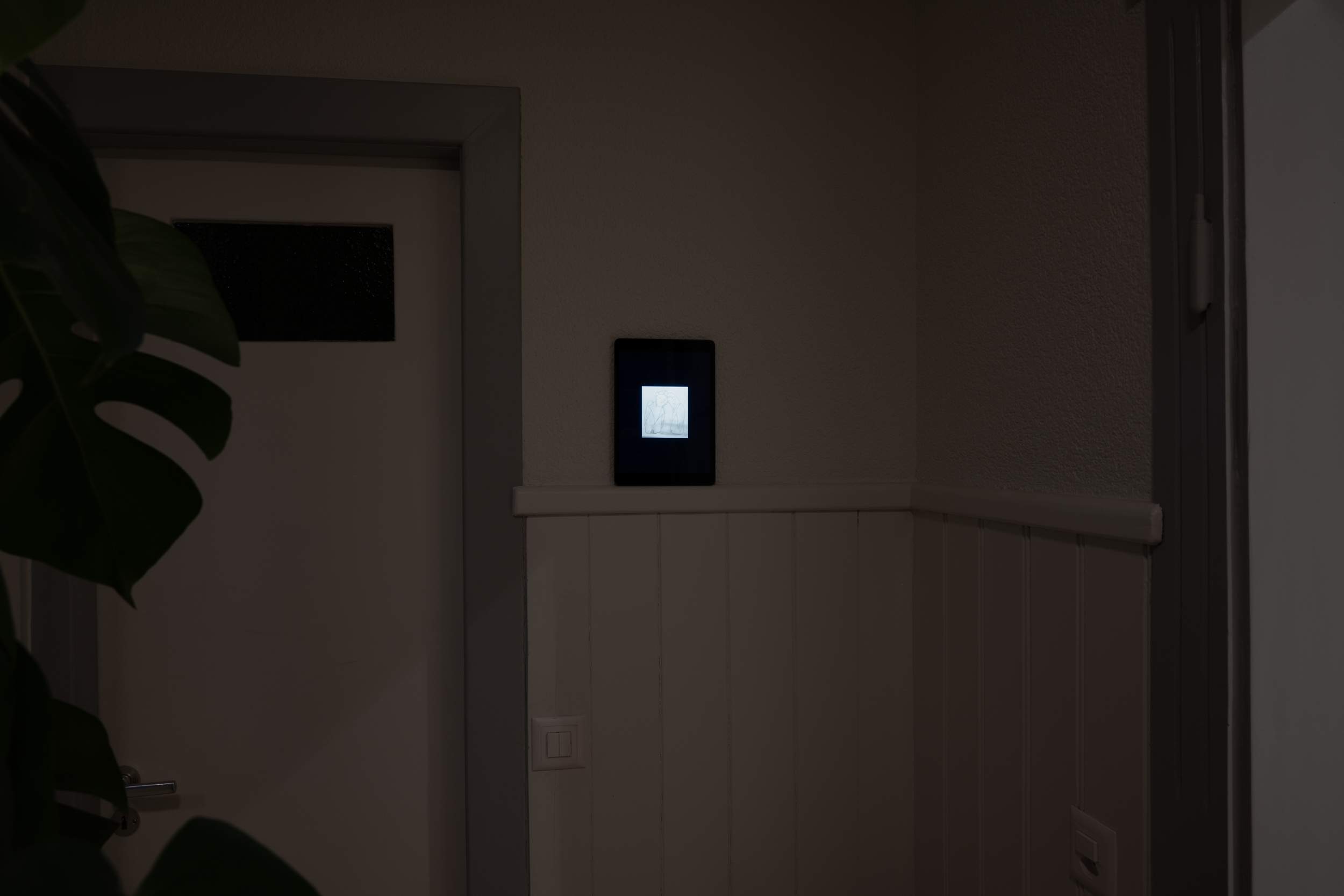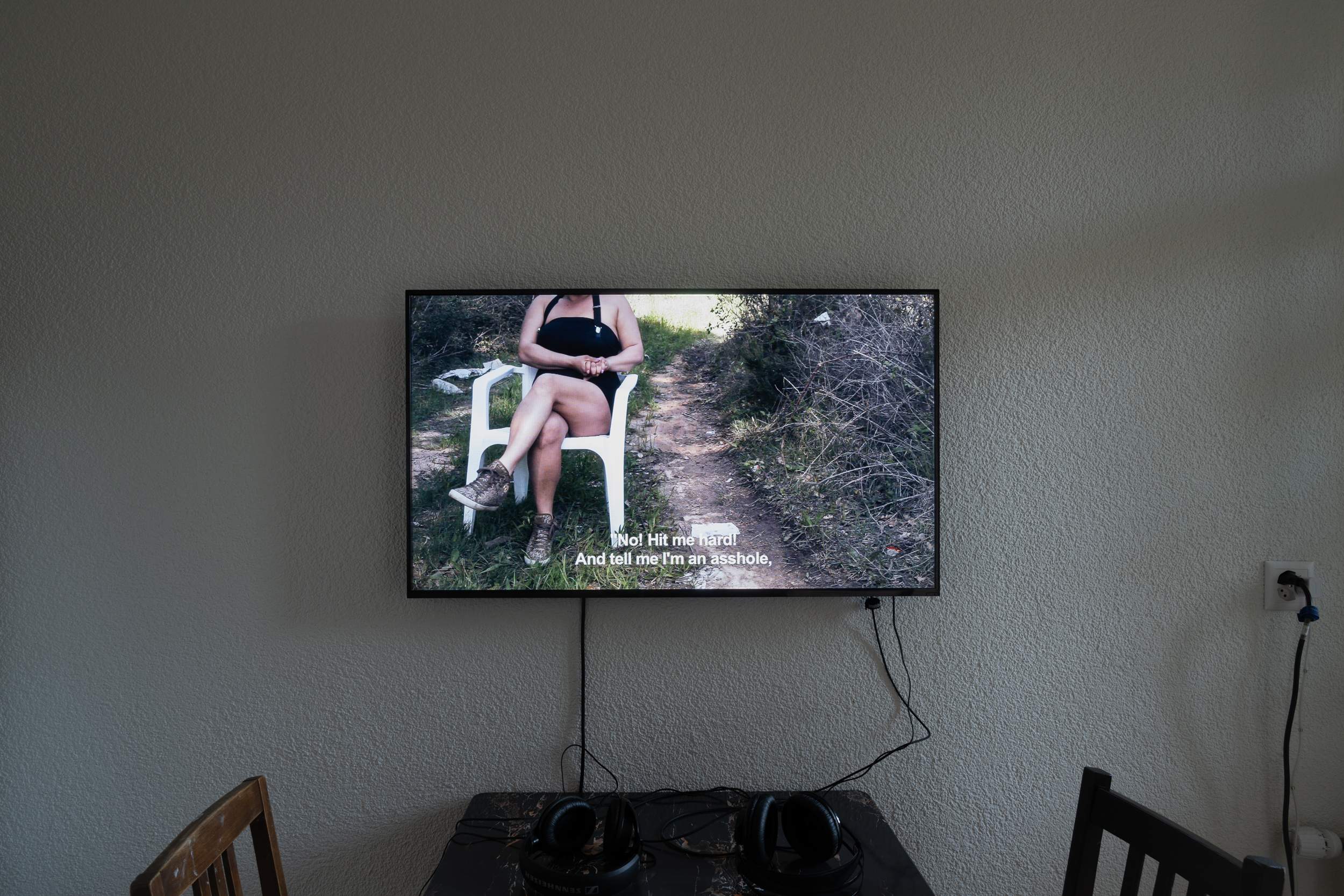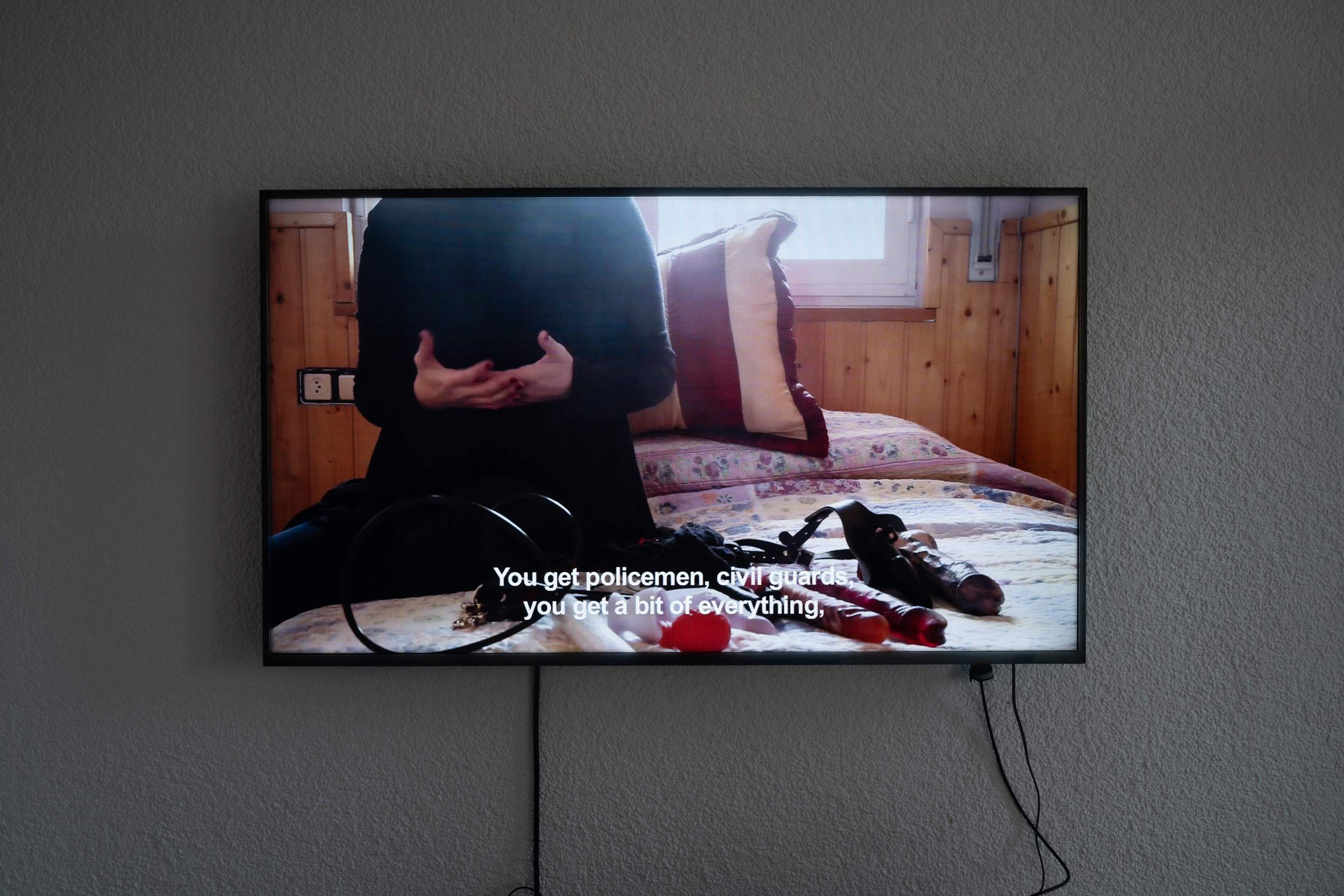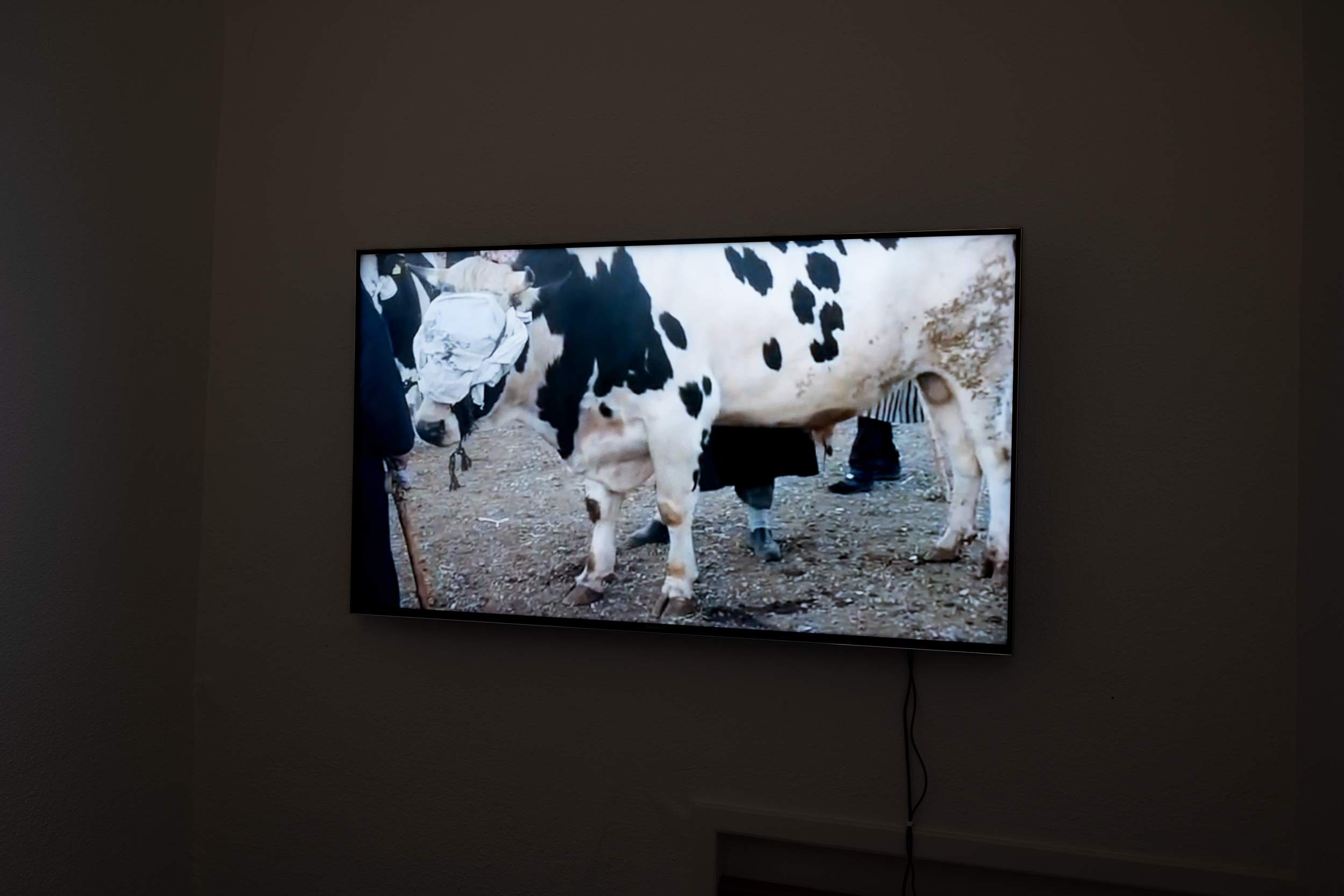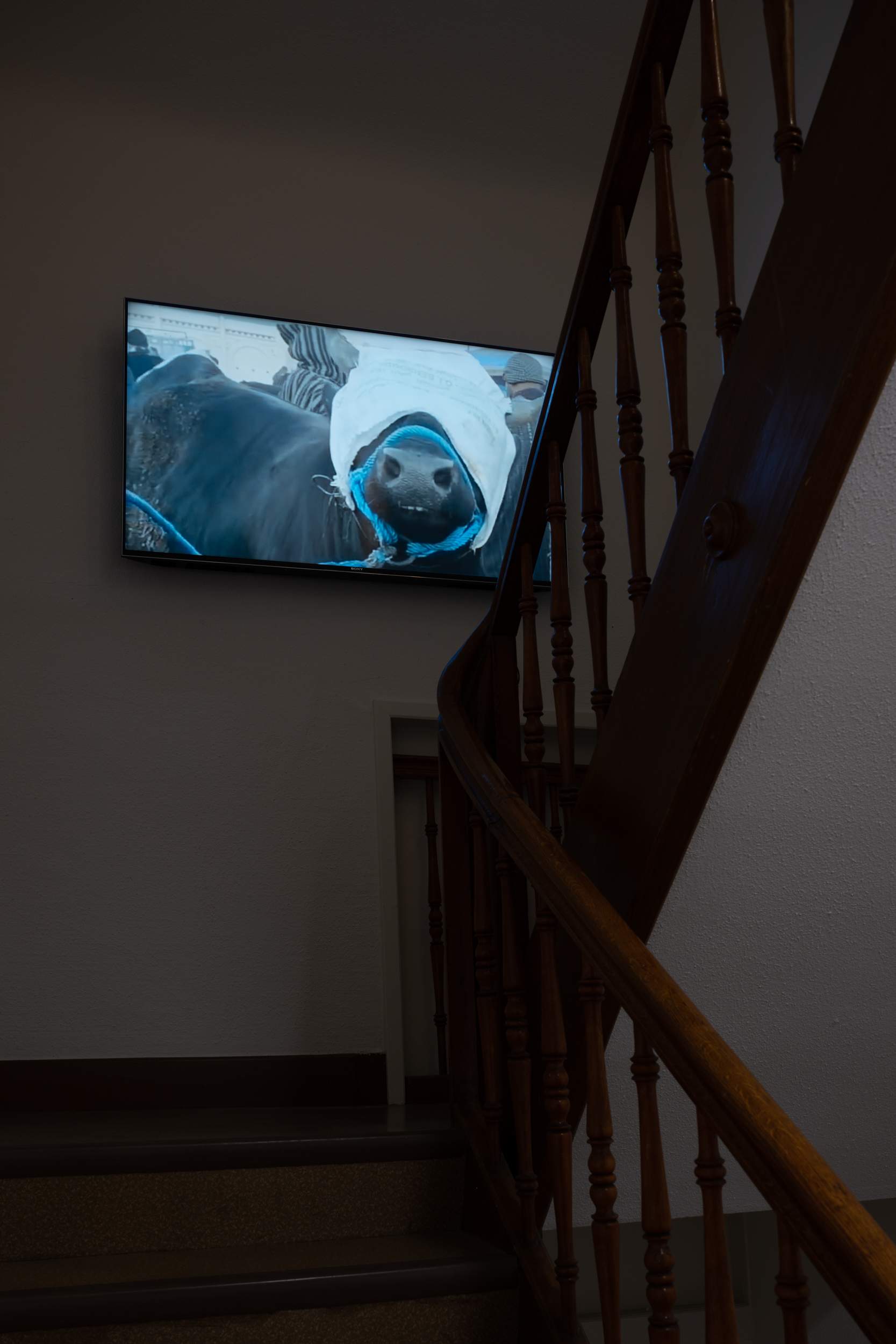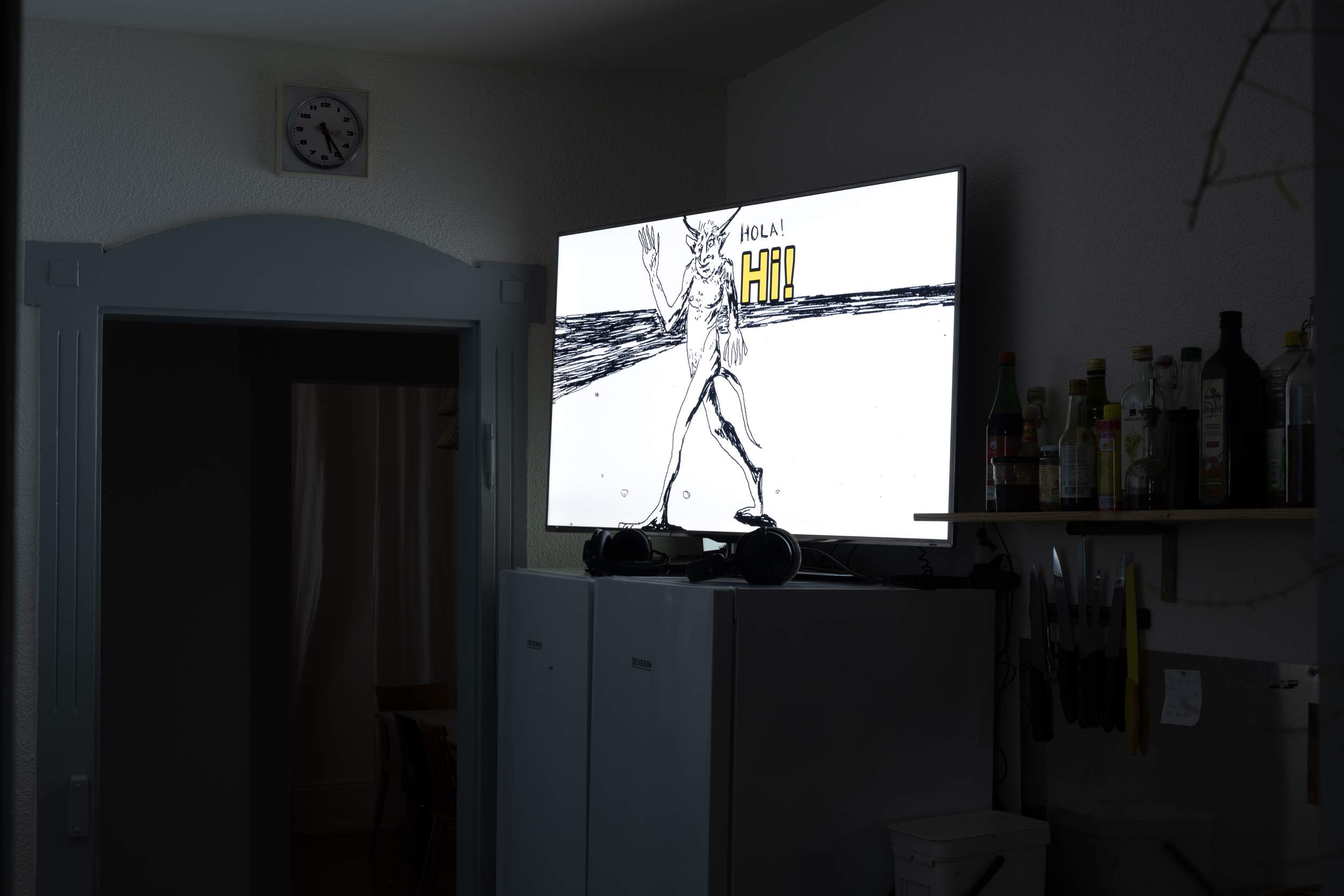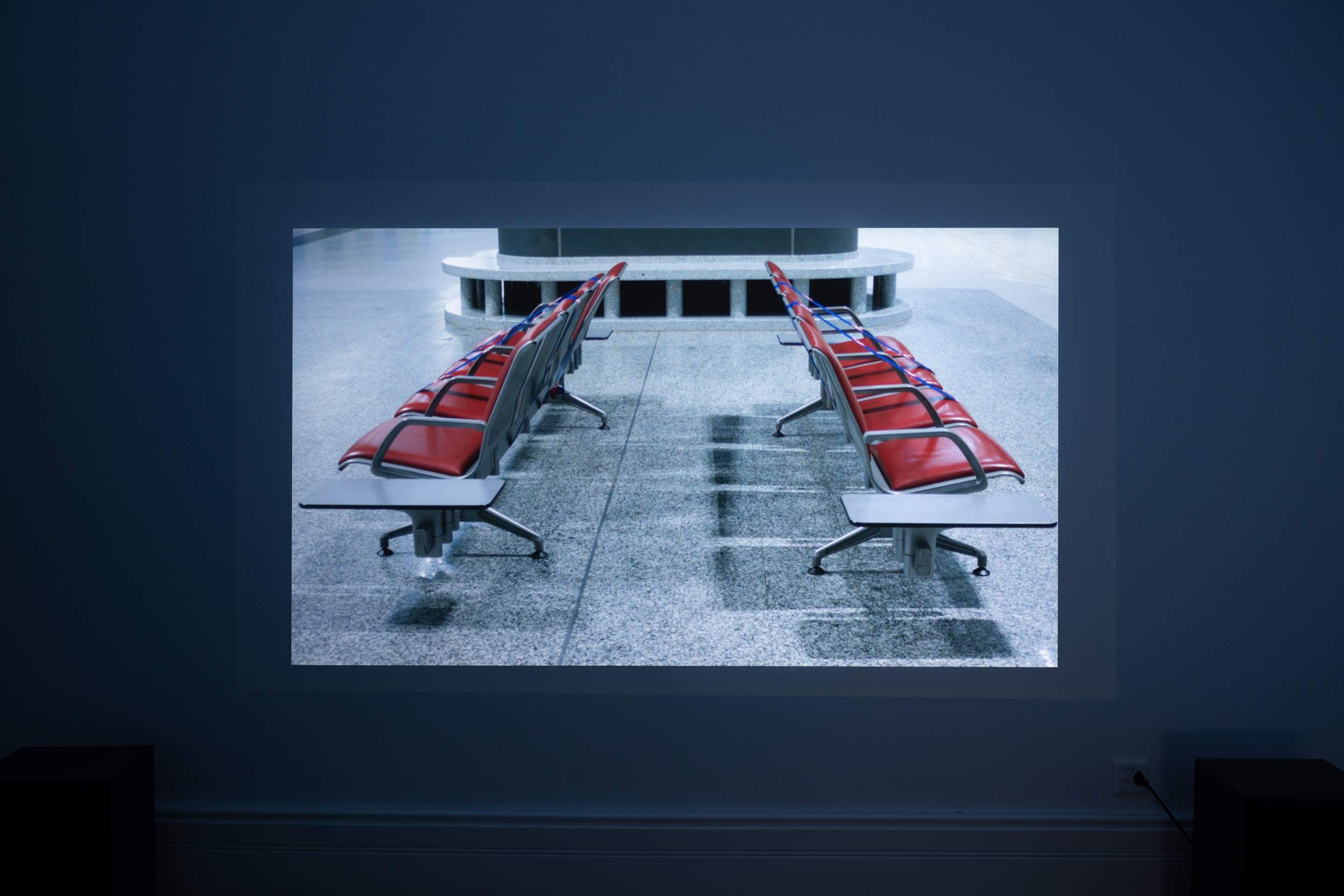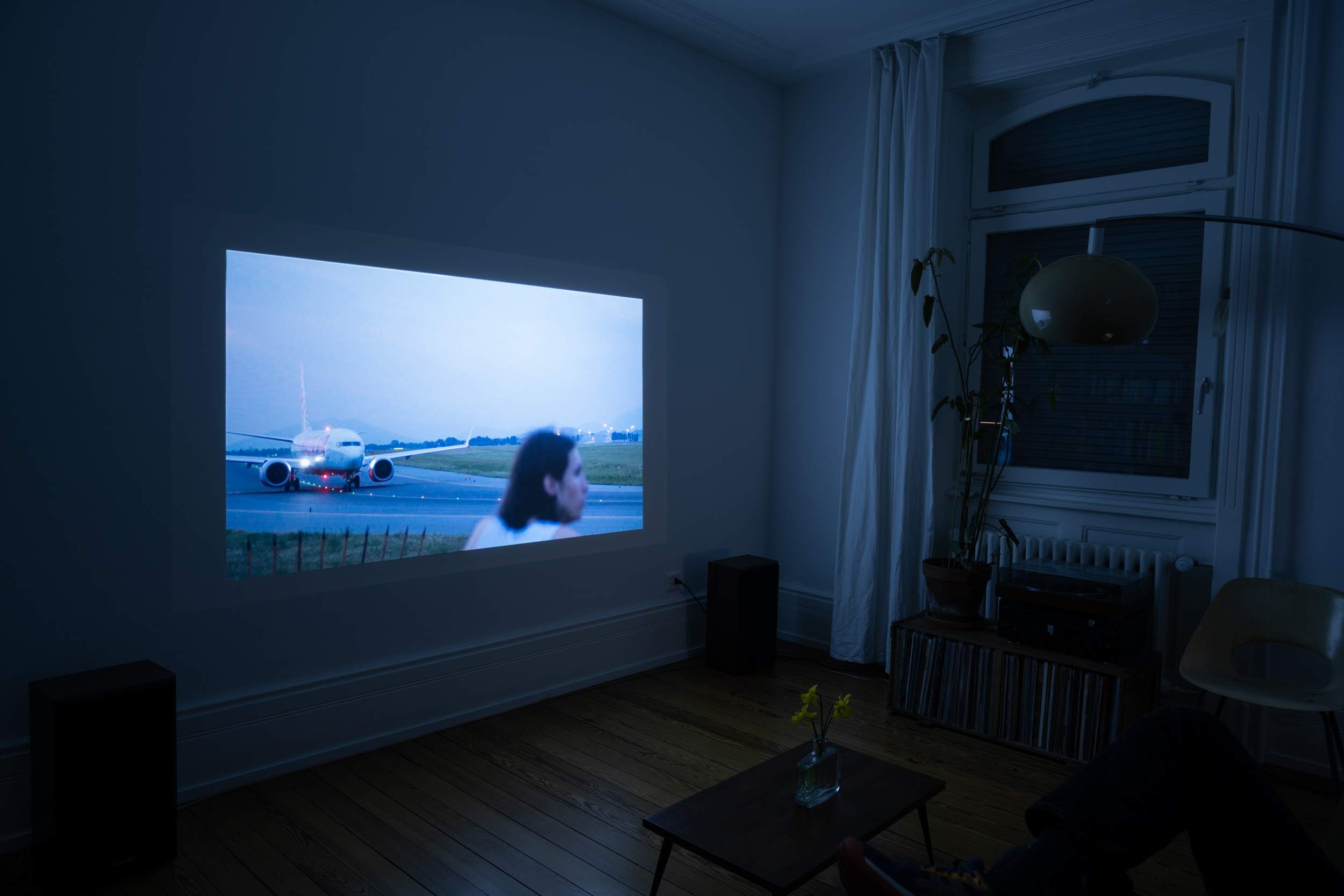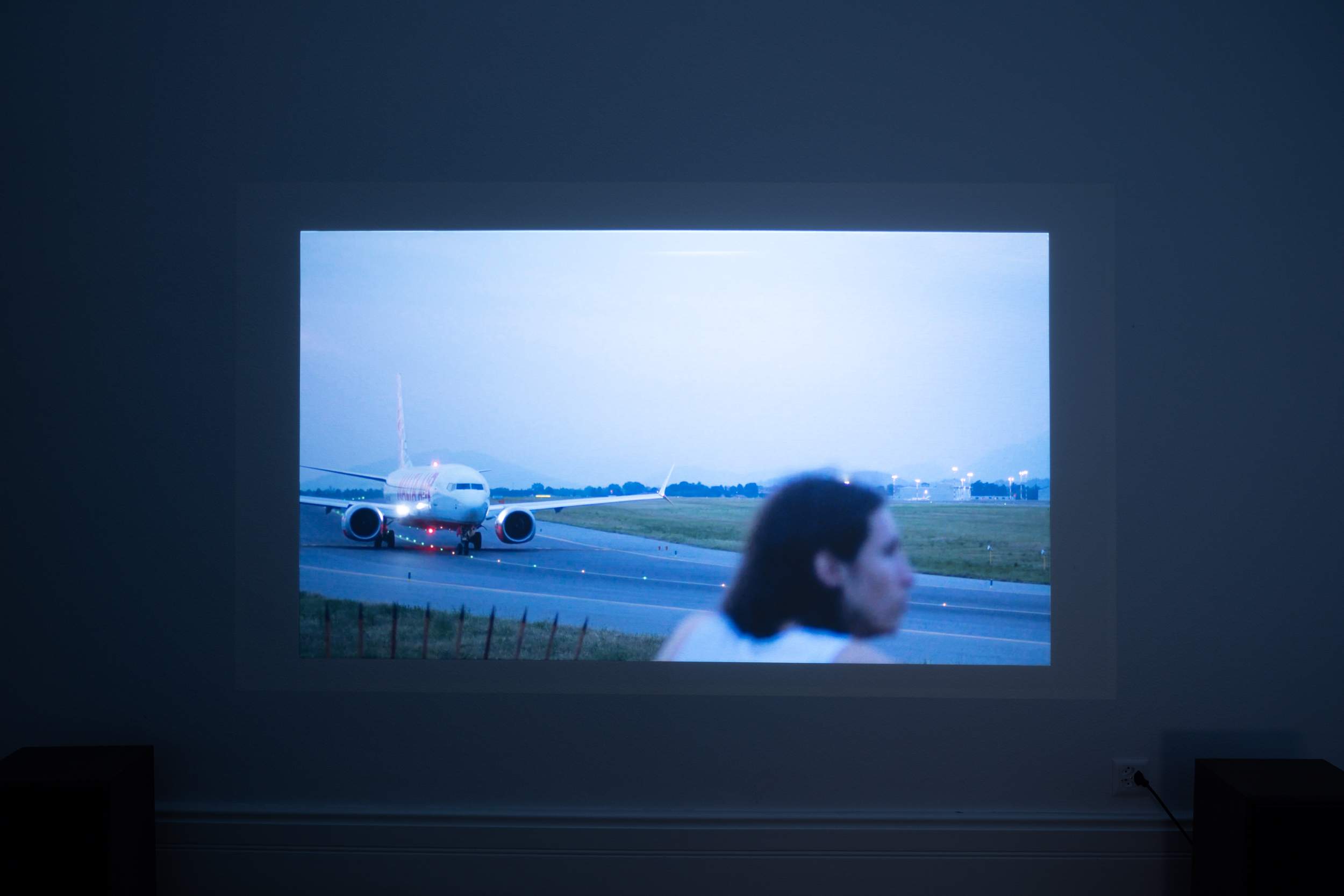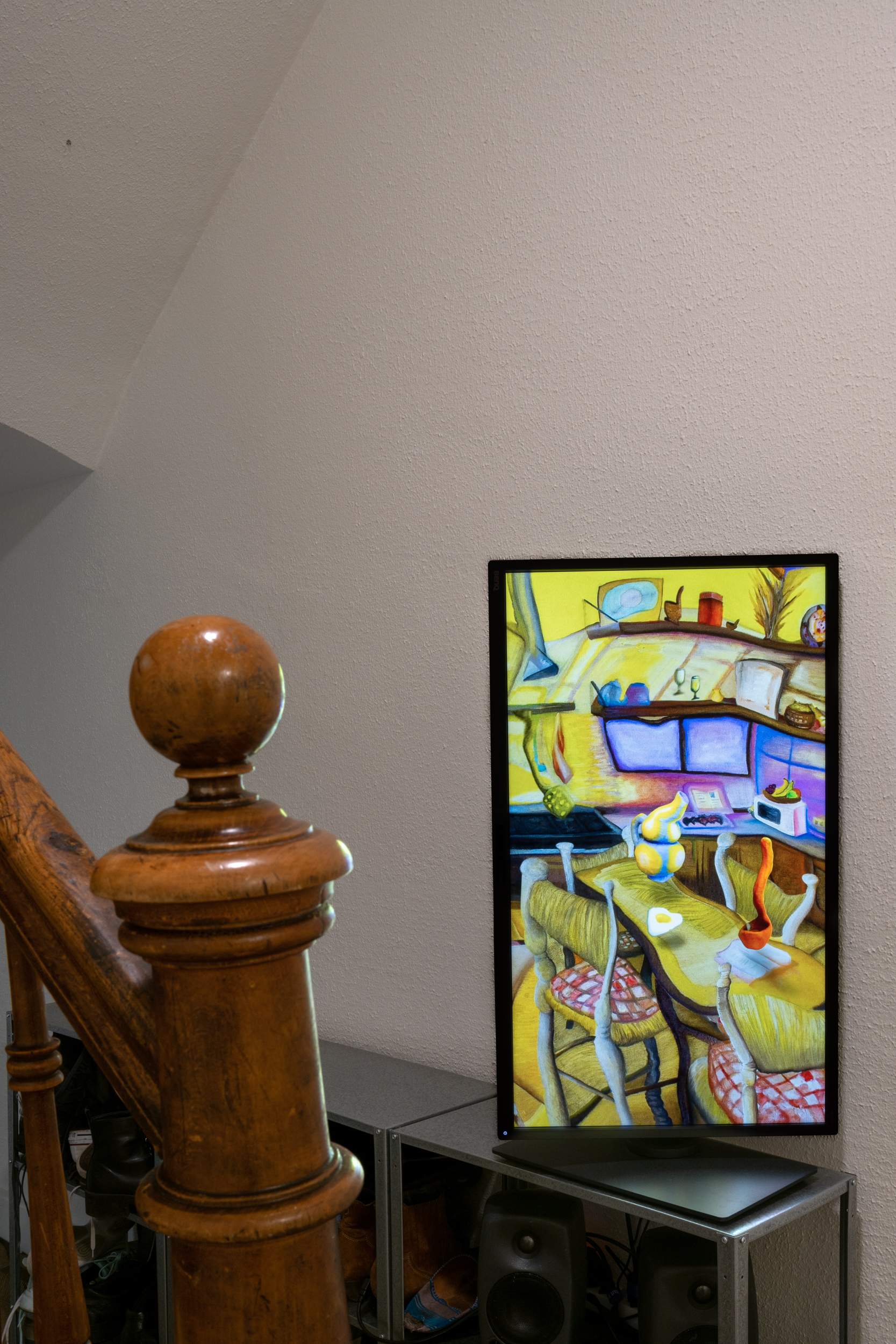Parallelmontage
03.03.2023 - 19.03.2023
Vernissage:
Friday, 3rd of March 2023, 6 - 10 PM.
Opening hours:
Wednesday 5 - 8 PM. & Sunday 2 - 5 PM.
TJ Cuthand.
"Reclamation".
HD video, color,
sound.
13:10 min.
2018.
“Reclamation” is a
documentary-style imagining of a post-dystopian future in Canada
after massive climate change, wars, pollution, and the after-effects
of the large-scale colonial project which has now destroyed the land.
When Indigenous people are left behind after a massive exodus by
primarily privileged white settlers who have moved to Mars, the
original inhabitants of the land cope by trying to restore and
rehabilitate the beautiful planet they belong to.
Leevi Toija.
“On Illumination and Disposition”
4k-video,
color, sound.
9:36 min.
Soundscape: Paavo
Piekkari.
Voiceover: Alma Djelic.
2022.
Leevi
Toija’s video work, “On Illumination and Disposition”, explores
the contradictory notions of light and darkness. The video is a
representation of a light fixture, but at the same time, it itself
functions as a lamp in the exhibition space. The flickering light on
the screen is ever-changing, but the setting of the video itself is
static and stable. In the harmonious soundscape created by Paavo
Piekkari (APEAK) one can hear the voice of an invisible and
authoritarian narrator softly reciting speculative statements
regarding darkness and light. Yet, these statements cannot be
universal. The work reflects on delving at the boundaries of light
and darkness. Is it possible to detach oneself from the dispositions
of illumination?
Phoenix Atala
"Critical Failure"
"Scene
0 directors’ intro"
HD video, color, sound.
3:27
min.
"Scenes 2 et 10 Ekko’s intro"
HD
video, color, sound.
1:43 min.
"Scenes 24 &
28 experimental shoot and rehearsal"
HD video, color,
sound.
3:59 min.
"Scene 18 the directors meet
Tanger"
HD video, color, sound.
3:37 min.
Critical
Failure is at once an anticipation film, an unfinished scenario on
the representation of queer racialized communities, an editing
process, an attempt to invent a new method of making cinema, a series
of ethical, aesthetic and practical questions, a sum of obstacles and
revelations, a narrative that describes the sensation of discovering
oneself different and that this discovery is liberating.
Initially
a Sci-Fi film, it has fermented, multiplied, developed, expanded like
water kefir. It is now a film-conversation, a film-pretext for a
multi-generational discussion about our image autonomy, as a queer
racialized community; a pretext for the possibility of gathering, to
talk, to organize; a pretext for thinking about how we storytell
ourselves, why we storytell ourselves and to whom we storytell
ourselves.
Critical Failure is a symphony, a choral
project, in which each member is attuned, not to the tuning fork of a
skillset but to the one of similar situation, forming a disharmony of
talents and a harmony of concerns.
Lara and Noa Castro
“Dous Faros (Insua e Roncudo)”
[“Two Lighthouses (Insua e Roncudo)”].
HD video, color,
sound.
6:20 min.
2023.
“Copla Pequena”
[“Little Copla”].
HD video, color, sound.
35
seconds.
2023.
-“Dous faros (Insua e Roncudo)”
and “Copla pequena” are part of our ongoing project series
“Sempre se encontra consolo” (“Comfort can always be found”)
composed by songs, tales and prophecies.
For these
particular pieces we work with the traditional form of song called
‘coplas’ and its metrics, which has been used for generations as
a popular form of poetic creation, but also as a way of telling
jokes, recording intra-history, complaining about quotidian
injusticies, personal matters, giving advice, or just to say hi to
somebody passing by.
Thus, in "Copla pequena” we
create our own copla based on the ones our grandfather and
great-grandfather used to compose and improvise and which is danced
by two almost identical characters that work as our alter egos. “Dous
faros (Insua e Roncudo)” reflects on the etymology of the word
“copla” and the ideas it conveys of togetherness, encounters, or
unions, but also about poetic associations and emergencies of memory
and dreams in very simple quotidian things.-
Núria Güell.
“De putas. Un ensayo sobre la masculinidad”
(“Off whoring. An essay on masculinity”).
HD video, color, sound.
58 Min.
2018.
“The device Güell uses
in “De Putas. Un ensayo sobre la masculinidad”, is mainly the
filmed interview, which is quite deceptive from the point of view of
visual satisfaction. The deceptive effect is even more broadly
reinforced in all of her recent work, or improved, I’d be tempted
to say, by a palette of visual tools that visibly undo the
obviousness of the visible. For example, De Putas, which runs for
about an hour, both violently and comically features only cut-off
heads, that is, we only see bodies—the heads are cut-off by the
frame—which has the strange effect of making the heads exist solely
through the voices issuing from them, thus creating a surprising
intimacy of sound with these women, who are singled out for viewers
in a much different way than if we could see them. More than a
feminist argument of distancing the female image that is fetishized
by male desire (it seems in any case that a headless body loses a lot
of its erotic power…), I see it as a way of rendering audible what
would otherwise have no, or very little value if we could see these
women, identify them by their faces, and thus bring them back to
their image. This device potentiates the materiality of the voice—its
grain, rhythm, and tonalities—and renders accessible what is
normally made invisible." [...]
Fragment from a text by
Sophie Mendelsohn.
Roman Selim Khereddine & Modulaw
"Hecatombe"
HD
Video, color, sound (binaural).
22:08 min.
2021.
'Do
you know what a hecatomb is?' I associated that word with nuclear
warfare, so I thought it better not to reply. But he kept asking. 'A
disaster', I said, 'a catastrophe?' 'No, a hecatomb is the sacrifice
of a hundred oxen all at once. It comes from the Greek hekaton, which
means one hundred, and bous, which means ox. There are even records
from classical times of five hundred oxen being slain. Can you
imagine that?'
'Yes, I can imagine anything.'
- Roberto Bolaños, Amuleto, 1999.
Mónica Heller.
"El Gato Sangrante y El Corazón
Barbudo".
2D animation video, color, sound.
6:03
min.
2019.
“El Gato Sangrante” (“The Bleeding
Cat”) is a character who is constantly mismatched to the
professional responsibilities and demands of the environment. Between
his feline instincts and the demands imposed on him, he has to
abandon his own nature and his passionate way of conceiving the world
while he encounters hostile and strange situations that are at the
same time tender and distressing and that undermine his
animality.
El Gato Sangrante seeks work, occupation or
insertion in a given environment and his stories are related to this
always messed up relationship between power relations and
vulnerability.
"El Gato Sangrante y El Corazón Barbudo"
("The Bleeding Cat And The Bearded Heart") is an animated
series made with a gestural and rough animation technique, formed by
"poor" drawings in movement and a narration that could be
weak. The stories narrate own, or close, experiences that are
intensified until they become fantastic but relatable, touching and
dark fables.
Valentina Parati.
SPOTTER
HD video, color,
sound.
17:33 min.
2022.
The airport is a
transitional space, where there are no social relations and nothing
memorable happens, but it is a personal place characterized by a
moment we have with ourselves to wait. But there are also other
areas: people are used to wait outside in a ‘’non-places’’
which is point close to the airport where they can observe and
contemplate the planes at close quarters: the SPOTTER AREAS. Almost
as if we were outside a club/rave, four characters contemplate the
distant sound of the airport (a club to go to or return from). As the
nuances are those of a dating place, a place to go to after a rave or
a place of contemplation. Finally, leaving the spectator enveloped in
sound.
Tobias Dirty
“Siempre estoy dado vuelta” ("I'm
always turned upside down").
2D animation video, color,
sound.
Music by Vic Bang y YOTO.
07:30
min.
2022.
-"Siempre estoy dado vuelta"
("I'm always turned upside down") is an animated video made
from objects and paintings inspired by the kitchen of my house in
Villa Gesell (Argentina). The work has a text written and recited by
me in which I reflect on "the house" a type of structure
that in recent years I perceive differently.
If dreams are
the unconscious side of our mind, then the house is the unconscious
side of our body; under this strange premise sprout domestic sounds
that form experimental rhythms that help describe the parts that make
up the home and its relationship with our body.-

